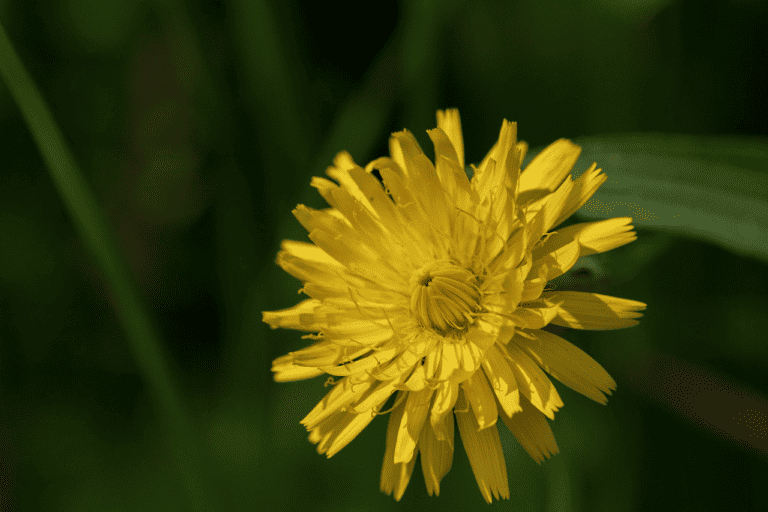Stress Management Techniques for Daily Calm
Stress is an inevitable part of life, and it can have a significant impact on our well-being. However, there are effective stress management techniques that can help us navigate daily challenges and find our zen. These techniques include guided imagery, meditation, progressive muscle relaxation, deep breathing, and more.
When it comes to stress reduction strategies, finding what works best for you is key. Whether you’re a beginner or have been practicing stress management for years, there are options available to suit every individual’s needs.
For those looking for natural stress management techniques, incorporating activities like going for a walk, practicing yoga, or engaging in creative pursuits can be beneficial. These activities not only provide a physical outlet but can also help relax the mind and promote a sense of calm.
Stress management techniques at work are also important, as many individuals experience high levels of stress in the workplace. Taking breaks, practicing deep breathing exercises, and seeking social support can all contribute to a healthier work environment.
Overall, effective stress management requires a combination of techniques that resonate with you. By exploring different stress relief methods and finding what works best for your unique needs, you can cultivate a sense of daily calm and balance in your life.
Key Takeaways:
- Stress management techniques are essential for navigating daily challenges and finding balance.
- Options for stress reduction include guided imagery, meditation, progressive muscle relaxation, and deep breathing.
- Natural stress management techniques such as going for a walk or engaging in creative pursuits can provide relief.
- Stress management techniques at work are important for maintaining a healthy work environment.
- Exploring different techniques and finding what works for you is crucial for effective stress management.
Guided Imagery for Stress Relief
When stress is weighing you down, finding ways to calm your mind and regain a sense of tranquility is essential. One powerful technique for stress relief is guided imagery.
Guided imagery involves creating a mental image of a peaceful scene or place. It allows you to transport yourself to a serene environment and immerse yourself in sensory experiences. By visualizing the sound of waves, the smell of the ocean, or the warmth of the sun on your skin, you can evoke a profound sense of relaxation.
To practice guided imagery, you can either use a guided imagery recording or follow the technique on your own. Set aside a few minutes in a quiet space where you won’t be disturbed. Close your eyes, take a deep breath, and let your mind wander to a tranquil location of your choice.
Visualize the details of this peaceful place. Imagine the colors, the textures, and the overall atmosphere. Focus on the sounds you would hear and the sensations you would feel. Engage all your senses and fully immerse yourself in this mental vacation.
Guided imagery is a simple and accessible technique that can be practiced anytime and anywhere. It can be particularly helpful during stressful situations, providing an immediate escape from the chaos of everyday life.
“Guided imagery is like a mini-vacation for your mind. It allows you to momentarily step away from stress and find moments of tranquility.” – Dr. Emma Thompson, Stress Management Expert
The benefits of guided imagery extend beyond stress relief. Regular practice can improve focus, enhance creativity, and promote a greater sense of well-being. It can also complement other relaxation techniques, such as deep breathing and meditation, amplifying their effects.
Guided Imagery Exercise for Stress Relief
Here’s a simple guided imagery exercise to help you experience stress relief:
- Find a comfortable position and close your eyes.
- Take a few deep breaths to relax your body and mind.
- Imagine yourself standing on a beautiful beach at sunset.
- Feel the warmth of the sand beneath your feet and the gentle breeze on your skin.
- Hear the rhythmic sound of the waves crashing against the shore.
- Take a moment to breathe in the fresh, salty air.
- As you gaze out into the horizon, feel a sense of peace and tranquility washing over you.
- Stay in this moment as long as it brings you comfort and relaxation.
- When you’re ready, slowly bring your awareness back to the present moment.
- Open your eyes and carry the sense of calm with you throughout your day.
Remember, guided imagery is a highly personal practice. Feel free to adapt the exercise to suit your preferences and create your own serene mental escape. With regular practice, guided imagery can become a powerful tool for stress relief and inner calm.
Meditation for Stress Reduction
Meditation is a powerful practice that offers numerous benefits for stress reduction and overall well-being. By incorporating meditation into your daily routine, you can cultivate mindfulness, enhance present moment awareness, and calm the mind.
Meditation involves focusing your attention and letting go of distracting thoughts. It allows you to create a sense of inner peace and tranquility, even in the midst of a busy and stressful day. By training your mind to be more focused and present, you can experience a greater sense of calm and resilience in the face of challenges.
One effective meditation technique is to focus on your breath. Find a quiet and comfortable place to sit, close your eyes, and begin to observe your breath as it naturally flows in and out. Notice the sensation of the breath entering and leaving your body, and gently bring your attention back to your breath whenever your mind starts to wander.
Mindfulness Meditation
Another popular form of meditation is mindfulness meditation. This practice involves bringing your attention to the present moment and cultivating an attitude of non-judgmental awareness towards your thoughts and emotions. By observing your thoughts and sensations without getting caught up in them, you can develop a greater sense of clarity and equanimity.
To practice mindfulness meditation, find a comfortable position and take a few deep breaths to relax your body. Then, bring your attention to the present moment by focusing on your breath, bodily sensations, or sounds in your surroundings. Whenever you notice your mind wandering, gently redirect your attention back to the present moment.
The Benefits of Meditation for Stress Management
Meditation has been scientifically proven to offer numerous benefits for stress management. Regular meditation practice can lead to physical changes in the brain, such as a decrease in the size of the amygdala, which is responsible for the stress response. This reduction in the amygdala’s size results in a decreased reactivity to stress triggers and a greater ability to remain calm and centered.
In addition to the physiological changes, meditation can also improve mental and emotional well-being. It can reduce anxiety, promote positive emotions, and enhance self-awareness. By cultivating a regular meditation practice, you can develop a more balanced perspective on life and a greater ability to respond to stress in a calm and mindful manner.
| Benefits of Meditation for Stress Reduction |
|---|
| Reduces stress and anxiety |
| Promotes emotional well-being |
| Enhances self-awareness |
| Cultivates present moment awareness |
| Improves overall mental and emotional resilience |
By incorporating meditation into your daily routine, you can experience the many stress management benefits it offers. Whether you choose to practice focused attention meditation, mindfulness meditation, or another form of meditation, the key is to make meditation a consistent part of your life. Start with just a few minutes each day and gradually increase the duration as you become more comfortable.
“Meditation is not a means of escaping reality, but rather a way of embracing it with compassion and clarity.” – Jon Kabat-Zinn
Take a moment each day to quiet your mind, find inner stillness, and connect with the present moment. Through regular meditation practice, you can find solace in the midst of life’s challenges, cultivate a sense of peace, and empower yourself to manage stress more effectively.
Progressive Muscle Relaxation for Deep Relaxation
Progressive muscle relaxation is a powerful technique for achieving deep relaxation and releasing tension. By systematically tensing and relaxing different muscle groups in your body, you can increase your awareness of tension and learn to relax more easily. This technique combines mindfulness and deep breathing to induce a state of deep relaxation, helping you alleviate stress and promote overall well-being.
To practice progressive muscle relaxation, start by finding a comfortable and quiet space. Take a few deep breaths to center yourself and bring your attention to the present moment. Begin by tensing the muscles in your forehead for a few seconds, then release the tension and allow the muscles to relax completely. Move through each muscle group, such as your jaw, shoulders, chest, arms, hands, abdomen, hips, thighs, calves, and feet, tensing and relaxing them one by one. As you progress through each muscle group, focus on the sensations of tension and relaxation, cultivating a deep sense of mindfulness.
With practice, you will become more attuned to the tension in your body and learn to release it effortlessly. Progressive muscle relaxation can help you release physical and mental tension, reduce stress, and promote a sense of calm and balance in your life.
Try incorporating progressive muscle relaxation into your daily routine, especially during times of heightened stress or before bedtime. You can also combine it with other relaxation techniques, such as deep breathing or guided imagery, to enhance the effectiveness and deepen your relaxation experience.
To further illustrate the steps involved in progressive muscle relaxation, here is a sample muscle-relaxation exercise:
- Sit or lie down in a comfortable position.
- Take a few deep breaths, inhaling through your nose and exhaling through your mouth.
- Starting from your forehead, tense the muscles by gently scrunching your eyebrows together. Hold the tension for a few seconds, then release and relax the muscles completely.
- Move your attention to your jaw and clench your teeth together. Maintain the tension for a few seconds, then release and relax the muscles.
- Continue this pattern, moving through each muscle group in your body, tensing and relaxing them one by one.
- Aim to spend about 10-15 seconds tensing each muscle group before releasing the tension and relaxing.
- Once you have gone through all the major muscle groups, take a few moments to focus on the overall sense of relaxation and calmness in your body.
By incorporating progressive muscle relaxation into your daily routine, you can experience deep relaxation, release tension, and reduce stress, allowing you to achieve a state of inner calm and tranquility.
Deep Breathing for Immediate Stress Relief
Deep breathing is a powerful technique for immediate stress relief. By focusing on your breath and changing the way you breathe, you can activate your body’s relaxation response and calm your nervous system. Deep breathing exercises can be performed anywhere and at any time, making them ideal for stressful situations.
When we’re stressed, our breath tends to shorten and become shallow. This can further intensify our feelings of stress and anxiety. However, by consciously taking deep breaths, we can reverse this process and induce a state of calm and relaxation.
There are many different deep breathing techniques that you can try, but here are two simple ones that you can incorporate into your daily routine:
- Belly Breathing: Find a comfortable position, either sitting or lying down. Place one hand on your chest and the other hand on your abdomen. Take a slow, deep breath in through your nose, allowing your abdomen to rise and your chest to remain still. Exhale slowly through your mouth, letting your abdomen fall. Practice this for a few minutes, focusing on the sensation of your breath moving in and out.
- Peaceful Breath Visualization: Close your eyes and imagine yourself in a peaceful, serene place. As you inhale, imagine breathing in calm energy and relaxation. As you exhale, imagine releasing all tension and stress from your body. Visualize this process with each breath, allowing your mind and body to become more and more relaxed.
Deep breathing exercises not only provide immediate stress relief but also have long-term benefits for stress management and overall well-being. By incorporating deep breathing into your daily routine, you can cultivate a sense of calm and improve your ability to cope with stress.
Take a moment right now to practice deep breathing. Close your eyes, take a deep breath in, and exhale slowly, releasing any tension or stress that you may be holding onto. Feel the calming effects of deep breathing as it soothes your body and mind.
Remember, deep breathing is a simple yet powerful tool that you can use anytime, anywhere to find immediate stress relief. By making deep breathing a regular practice, you can enhance your well-being and bring more peace into your life.
| Benefits of Deep Breathing for Stress Relief | How to Incorporate Deep Breathing into Your Daily Routine |
|---|---|
|
|
Incorporating deep breathing into your daily life doesn’t have to be complicated. By taking a few moments each day to focus on your breath, you can experience immediate stress relief and cultivate a greater sense of calm and well-being.
The Benefits of Exercise for Stress Management
Exercise is a highly effective stress reliever that can provide immediate and long-term benefits. Engaging in physical activity, such as walking, not only allows you to enjoy a change of scenery but also releases endorphins, the feel-good hormones, in your body. This can help shift your mindset and bring a sense of rejuvenation and relaxation.
Exercise also promotes a strong mind-body connection, allowing you to focus on the present moment and let go of stressors. Whether it’s through yoga, running, or dancing, physical activity can help you find your flow and improve your overall well-being.
Regular exercise has been shown to have a positive impact on stress levels, mood, and mental health. It not only helps reduce anxiety and feelings of stress but also improves sleep quality and enhances cognitive function.
Here are some key benefits of exercise for stress management:
- Reduces stress hormones: Exercise helps lower the levels of cortisol, the primary stress hormone in the body.
- Increases endorphins: Physical activity triggers the release of endorphins, which elevate mood and promote a sense of well-being.
- Improves sleep: Regular exercise can help regulate sleep patterns, leading to better quality sleep and increased energy levels.
- Boosts self-confidence: Accomplishing fitness goals and improving physical fitness can significantly enhance self-esteem and self-confidence.
- Enhances cognitive function: Exercise has been shown to improve focus, memory, and overall cognitive function.
Remember, finding an exercise routine that you enjoy and fits into your lifestyle is key. Whether it’s going for a daily walk, joining a fitness class, or engaging in team sports, finding an activity that brings you joy will help make exercise a sustainable and enjoyable part of your stress management routine.
Exercise Tips:
“The best exercise is the one you enjoy and will stick to.”
Here are some tips to help you incorporate exercise into your stress management routine:
- Start small: Begin with short sessions of exercise and gradually increase the duration and intensity over time.
- Find a workout buddy: Exercising with a friend or family member can make the experience more enjoyable and help keep you motivated.
- Choose activities you love: Find activities that you genuinely enjoy and that align with your interests and preferences.
- Make it a habit: Schedule regular exercise sessions into your weekly routine and treat them as important appointments.
- Listen to your body: Pay attention to how your body feels during and after exercise. If something feels uncomfortable or painful, modify the activity or seek guidance from a professional.
By incorporating exercise into your stress management routine, you can improve both your physical and mental well-being. So put on your favorite workout attire, lace up your sneakers, and start reaping the countless benefits of exercise on your journey to a stress-free life.
The Power of Human Connection for Stress Reduction
Building and maintaining strong social support networks is crucial for effective stress management. When we connect with others, whether it’s through sharing our experiences, seeking emotional support, or engaging in social activities, we create a sense of belonging and understanding. The power of human connection lies in the empathy, encouragement, and perspective that others can offer. By seeking social support, we can cope with stress, reduce feelings of isolation, and promote emotional well-being.
Conversations with loved ones, joining support groups, or participating in social activities all contribute to fostering meaningful connections. These connections become valuable resources in managing stress and finding balance in our lives.
“The strongest predictor of happiness is social support. Connection is why we’re here; it is what gives us purpose and meaning to our lives.” – Brené Brown
Research has consistently demonstrated that social support plays a vital role in our overall well-being. Studies have shown that people with strong social support systems have lower levels of stress, improved mental health, and greater resilience in coping with adversity.
When we surround ourselves with individuals who understand and support us, we gain a sense of validation and encouragement. They remind us that we are not alone in our struggles and provide valuable insights and advice. Connecting with others also allows us to share our burdens and relieve some of the mental and emotional burdens that can arise from stress.
The Benefits of Social Support
Seeking social support as a stress reduction strategy can yield numerous benefits, including:
- Providing a safe space to express emotions and share experiences
- Offering practical guidance and resources for coping with stress
- Boosting self-esteem and confidence through positive interactions
- Encouraging healthy behaviors and habits
- Creating opportunities for laughter and joy
Human connection also plays a crucial role in promoting a sense of belonging and meaning in our lives. Research has shown that individuals who feel socially connected to others have a stronger sense of purpose and higher levels of life satisfaction.
Cultivating Meaningful Connections
To harness the power of human connection for stress reduction, consider the following strategies:
- Reach out to friends, family, or colleagues for a supportive conversation.
- Join community groups, clubs, or organizations that align with your interests.
- Volunteer for a cause that you are passionate about.
- Attend social events and gatherings to meet new people.
By actively seeking and nurturing social connections, we can create a foundation of support that helps us manage stress more effectively. Remember, you are never alone in your journey, and there are people who are ready and willing to lend a listening ear or extend a helping hand.
Human beings are social creatures, and our emotional well-being thrives on meaningful connections. Don’t underestimate the power of reaching out and fostering relationships – they can be a key source of strength and comfort in times of stress.
Incorporating social support into your stress management toolkit can be transformative. It reminds us that we are not alone in our experiences and equips us with the compassion and understanding necessary to navigate life’s challenges. Take the time to nurture your relationships and lean on others when you need it. Together, we can build resilience, find solace in human connection, and experience emotional well-being even in the face of stress.
Incorporating Relaxation Techniques into Daily Life
In order to effectively manage stress, it’s important to incorporate relaxation techniques into your daily life. By making self-care and stress management a priority, you can enhance your overall well-being and find a sense of calm in the midst of daily challenges.
One strategy for incorporating relaxation techniques is to set aside dedicated time for relaxation each day. This can be as little as 10 minutes or as long as an hour, depending on your schedule and preferences. Use this time to engage in activities that promote relaxation, such as practicing mindfulness, deep breathing exercises, or engaging in a calming hobby.
Another way to incorporate relaxation techniques into your daily life is by integrating mindfulness into your routines. Mindfulness involves bringing your attention to the present moment and fully engaging in whatever you are doing, whether it’s eating, walking, or working. By practicing mindfulness, you can reduce stress and cultivate a greater sense of calm and awareness.
Creating a calming environment can also promote relaxation in your daily life. Consider incorporating elements such as soft lighting, soothing scents, or calming music into your living space or workspace. These environmental cues can help trigger a relaxation response and create a sense of tranquility.
Here are some additional relaxation techniques that you can incorporate into your daily life:
- Take short breaks throughout the day to practice deep breathing exercises.
- Engage in physical activity or exercise, which can help reduce stress and promote relaxation.
- Spend time in nature, whether it’s taking a walk in the park or sitting in your backyard.
- Practice progressive muscle relaxation to release tension in your body.
- Engage in activities that bring you joy and help you relax, such as reading, gardening, or listening to music.
By incorporating these relaxation techniques into your daily life, you can create a consistent practice of self-care and stress management. Remember, finding what works best for you may take some trial and error, so be open to exploring different techniques and finding what resonates with you.
Conclusion
Stress management techniques are essential for finding daily calm and cultivating a sense of tranquility in our lives. While stress is an unavoidable part of life, how we choose to respond to it can make all the difference. By incorporating effective stress management techniques such as guided imagery, meditation, progressive muscle relaxation, deep breathing, exercise, social support, and relaxation techniques into our daily routines, we can navigate challenges with grace and ease.
These stress management techniques not only provide immediate relief but also promote long-term stress reduction and overall well-being. It’s important to remember that everyone’s journey to finding their zen is unique, so finding the right combination of techniques that resonates with you is key. Start implementing these techniques today and unlock tranquility in your life.
By making stress management a priority and incorporating these techniques into our daily lives, we can create a daily calm that allows us to effectively manage stress and find balance. With commitment and practice, we can navigate the ups and downs of life with greater ease, resilience, and peace of mind. Take the first step towards a more stress-free life and embrace the power of stress management techniques to find your zen.






